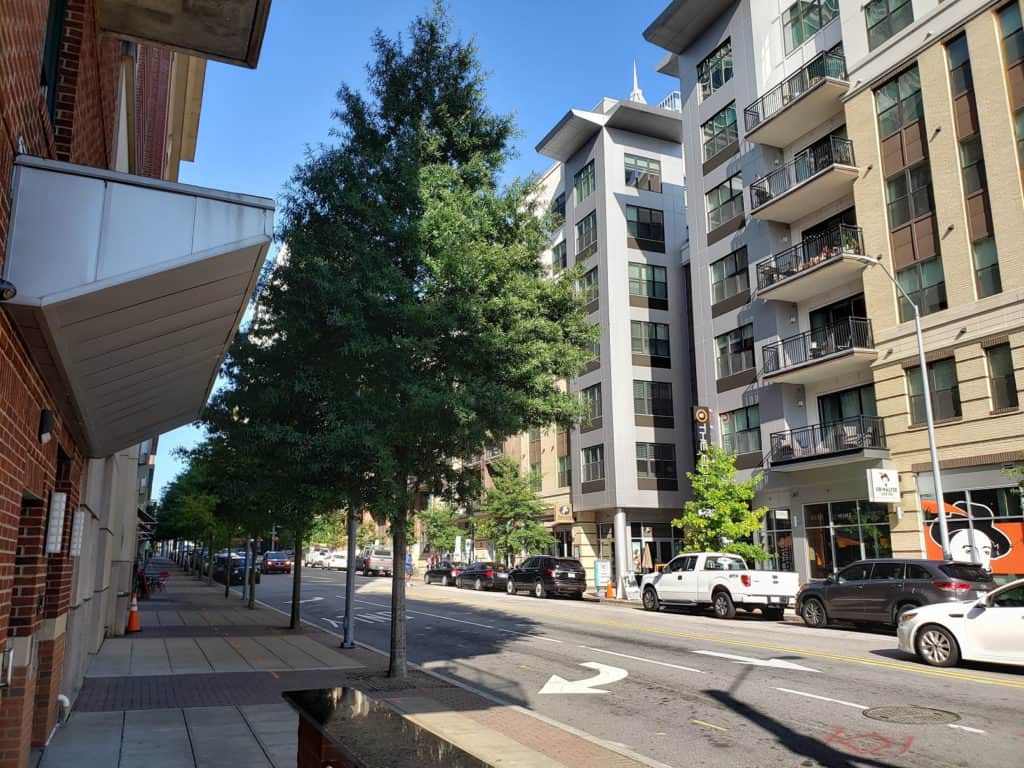Share this article
Urban forests draw more birds and insects than street trees
Rather than rely on the safety of tree-lined streets for food, leaf-eating insects seem to prefer urban forests, even if they have to tolerate more predators in them.
In the wild, insect-eating birds prefer areas with high plant diversity and complexity of habitat because they attract a higher number and diversity of insects and provide more suitable habitat. Researchers wondered if a similar relationship existed in urban areas with fragmented ecosystems. Insects might flourish better in street trees, they thought, where they would face fewer birds and predatory insects than in urban forests.
Instead, they found the insects preferred the urban forests, and so did the birds.

A plasticine caterpillar model showing evidence of various bite attacks. Credit: Larry Long
“These clusters of relatively undisturbed trees and shrubs may actually be important for urban arthropods and the birds that depend on them, because they provide habitat and food which may not be available even a few meters outside of the forest fragment,” said Larry Long, an assistant professor at Duquesne University in Pittsburgh, Pennsylvania, and the lead author of a study published recently in Urban Ecosystems.
Long and his co-author Steven Frank, of North Carolina State University, made plasticine models of caterpillars and put them in street trees and urban forests in Raleigh, North Carolina. They examined the pliable models twice per week for evidence of predation attempts. They also collected leaf-chewing herbivores by beating branches and leaves, letting the insects fall into a funnel trap. Finally, they checked leaves on trees in both areas to estimate the extent of leaf damage over a fixed period.
As expected, they found the plasticine caterpillars showed evidence of a number of attacks, from the beak marks of birds to attack marks from ants or wasps. Models in the forest fragments had far more evidence of attacks than those on street trees.

Street trees like these have lower numbers of herbivorous insects and birds than trees in urban forests. Credit: Larry Long
But surprisingly, they also found that there were more leaf-chewing insects in the forest fragments and more leaf damage from them than in the street trees.
“Between the urban factors known to benefit herbivorous arthropods and our suspected lack of predation by insectivorous birds, we expected to find a lot more leaf-chewing herbivores on those isolated street trees than the forest fragment trees,” Long said.
But the study’s results show that despite the higher chance of predation, leaf-chewing insects still prefer forest areas to isolated street trees. “Forest fragments are probably also important to leaf-chewing arthropods, likely for some of the same reasons that they are important to birds,” Long said. The reasons may include more food, hiding places or mating opportunities, he said.
“The diversity and complexity of habitat found in these urban forest fragments contributes to both the abundance of insects and the birds who eat them,” Long said, adding that these fragments are the closest thing to natural systems present in some urban ecosystems. “Urban forest fragments are pretty unique because they are like little pockets of natural habitat.”
Header Image: Pink-striped oakworms (Anisota virginiensis) are among the leaf-eating insects that prefer urban forest fragments to street trees. Credit: Larry Long








